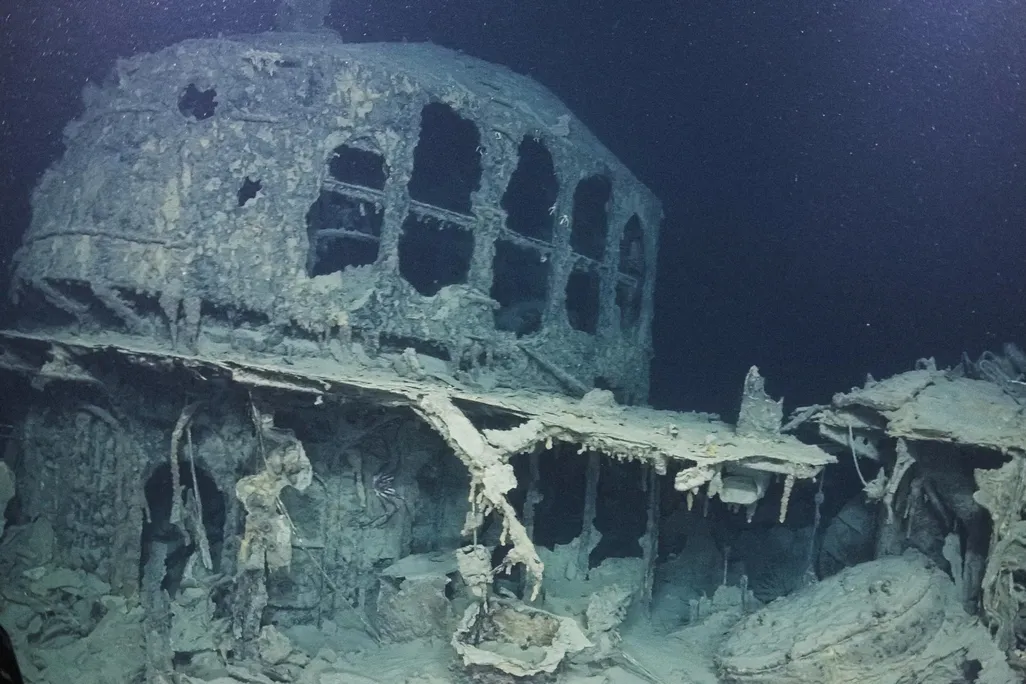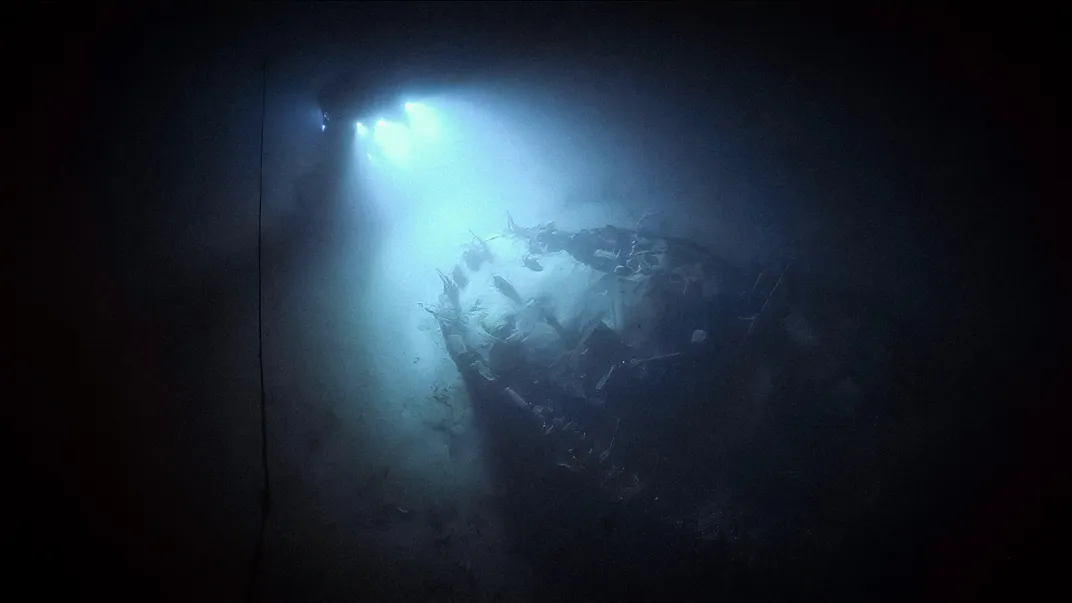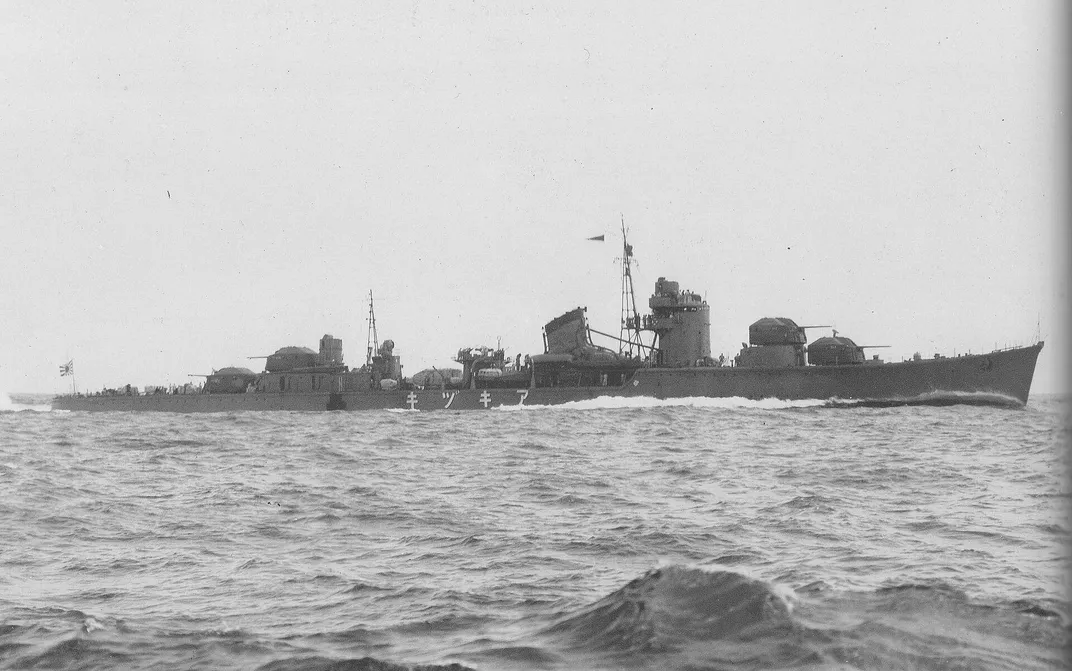Underwater Archaeologists Capture Photos of Japanese Warship That Hasn’t Been Seen Since It Sank During World War II
The “Teruzuki” was a Japanese Navy destroyer that sank near the Solomon Islands on December 12, 1942. Eight decades later, researchers have identified the wreckage in the Pacific

During World War II, a Japanese Navy destroyer called the Teruzuki sank in the Pacific waters near the Solomon Islands. Now, 83 years later, the shipwreck has been found and photographed.
The wreck is located between the islands of Guadalcanal, Savo and Nggela, an area once nicknamed Iron Bottom Sound by Allied soldiers because of the number of ships that sank there. According to the nonprofit Ocean Exploration Trust, five major naval battles were fought in this area between August and December 1942, costing 111 vessels, 1,450 planes and more than 20,000 lives.
Quick fact: Iron Bottom Sound in World War II
While hundreds of ships and planes sank in Iron Bottom Sound in 1942, fewer than 100 have been found.
The project is a collaboration between several institutions, including Ocean Exploration Trust, the Naval History and Heritage Command (NHHC), NOAA Ocean Exploration, the University of New Hampshire and the University of Rhode Island. According to a statement from the NHHC, the University of New Hampshire’s uncrewed surface vessel DriX initially found the wreckage.
“We didn’t know what it was,” Larry Mayer, director of the Center for Coastal and Ocean Mapping at the University of New Hampshire, tells Newsweek’s Nick Mordowanec. “It hadn’t been identified before.”

On July 12, experts aboard the Nautilus, Ocean Exploration Trust’s research ship, sent two remotely-operated vehicles—Hercules and Atalanta—equipped with high-quality cameras down to the site. According to a statement from the organization, the wreck is located more than 2,600 feet below the surface. Its stern was detached but intact, and its gun turrets were pointed upward—likely positioned to shoot down enemy aircraft.
“The Teruzuki was one of the rare destroyers that were designed for anti-aircraft warfare,” Kazushige Todaka, director of the Kure Maritime Museum in Hiroshima, tells the Japan News. “The original shape is still in excellent condition, and considering the appearance of the gun turrets, there’s no doubt it’s the Teruzuki.”
Because the Japanese military kept information about its equipment confidential, no historical images of the vessel exist. However, researchers know that the Teruzuki—which means Shining Moon—was an Akizuki-class destroyer commissioned in 1942. The roughly 440-foot-long ship was used in the Guadalcanal campaign, where it served as the flagship of Rear Admiral Raizō Tanaka, according to the NHHC. On December 12, 1942, two American torpedoes sank the Teruzuki, killing nine crew members.
At first, researchers weren’t sure whether the “massive” wreck they found was an American, Japanese or Australian vessel, Hiroshi Ishii, a Nautilus team member and maritime archaeologist at Kyoto University, tells Newsweek. The team was ultimately able to confirm the ship’s identity using high-quality images and historical sources.

“I feel so lucky to see this ship,” Ishii says in the NHHC’s statement. “The fact that we have not seen Teruzuki in over 80 years underscores the importance of recording maritime heritage now.”
The Teruzuki isn’t the Nautilus researchers’ only recent discovery in Iron Bottom Sound. Earlier this month, they also announced that they’d located the lost bow of the USS New Orleans. In November 1942, a Japanese torpedo struck the American Navy cruiser, severing and sinking its bow. Remarkably, the ship’s crew members sealed off its bulkheads and slowly sailed to a nearby island, where they fashioned a replacement bow from coconut tree logs. They then steered the ship backwards for more than 1,000 miles to Australia, where the vessel was repaired.



